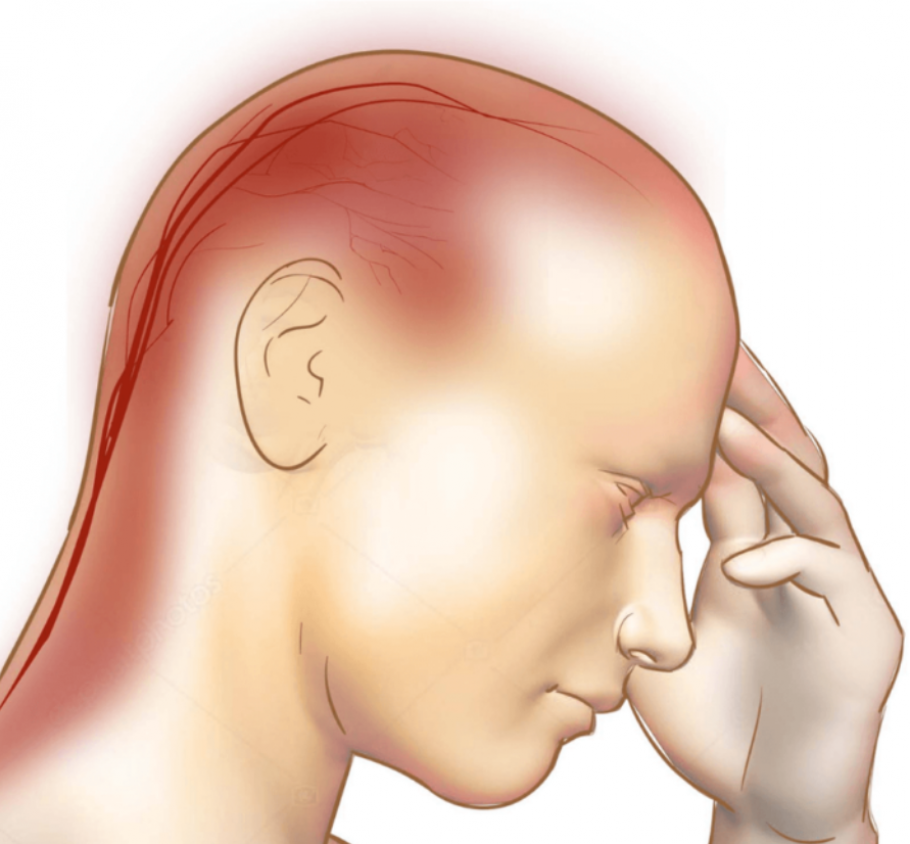
Headaches – there are many types!
There are many, many types of headaches. We will focus on a few that we can help at the clinic.
There are various types of headaches, categorised primarily into primary and secondary headaches:
- Tension Headaches: The most common type, often linked to stress or muscle strain.
- Migraine Headaches: Characterised by intense, throbbing pain, often accompanied by nausea and sensitivity to light or sound.
- Cluster Headaches: Rare but extremely painful, occurring in clusters or cycles over weeks or months.
- Sinus Headaches: Caused by inflammation in the sinuses, leading to pressure and pain around the forehead, eyes, and cheeks.
- Exertional Headaches: Triggered by physical activity or exertion.
- Cervicogenic Headaches: Originate in the neck and radiate to the head.
- TMJ Headaches: Linked to issues with the temporomandibular joint, often stemming from jaw misalignment or muscle strain.
- Postural Headaches: Caused by prolonged poor posture, leading to muscle strain and tension in the neck, shoulders, and head.
- Stress Headaches: Result from high levels of emotional or mental stress, often intertwining with tension headaches.
Symptoms of each type of Headache
Tension Headaches
- Dull, aching head pain.
- Pressure or tightness around the forehead, sides, or back of the head.
- Muscle tenderness in the scalp, neck, and shoulders.
Migraine Headaches
- Throbbing or pulsating pain, usually on one side of the head.
- Nausea or vomiting.
- Heightened sensitivity to light, sound, and sometimes smell.
- Visual disturbances such as aura or flashing lights.
Cluster Headaches
- Severe, sharp pain, often located behind or around one eye.
- Redness or swelling in the affected eye.
- Runny or congested nose.
- Episodes lasting from 15 minutes to 3 hours, occurring multiple times a day.
Sinus Headaches
- Deep, persistent pain in the forehead, cheekbones, or bridge of the nose.
- Worsening pain with movement or bending forward.
- Nasal congestion and discharge.
- Fever (in cases of sinus infection).
Exertional Headaches
- Throbbing head pain during or after physical activity.
- Pain typically on both sides of the head.
Cervicogenic Headaches
- Pain begins in the neck and spreads to the head, often on one side.
- Reduced neck mobility.
- Neck stiffness or discomfort.
TMJ (Jaw) Headaches
- Pain concentrated in the temples, jaw, or sides of the head.
- Jaw stiffness or clicking sounds during movement.
- Difficulty chewing or opening the mouth widely.
- Facial tenderness or pain radiating toward the ears.
Postural Headaches
- Dull or sharp pain, often in the neck, shoulders, and back of the head.
- Increased discomfort with prolonged sitting or standing.
- Muscle tightness in the neck and upper shoulders.
Stress Headaches
- Persistent, dull pain often felt as a band around the head.
- Difficulty concentrating due to the discomfort.
- Muscle tension in the scalp, neck, or shoulders.
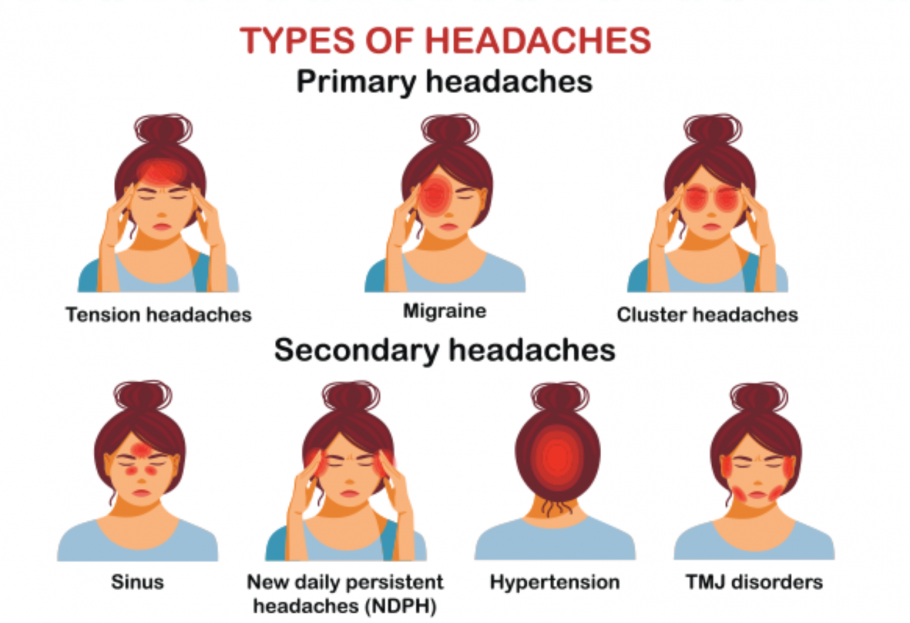
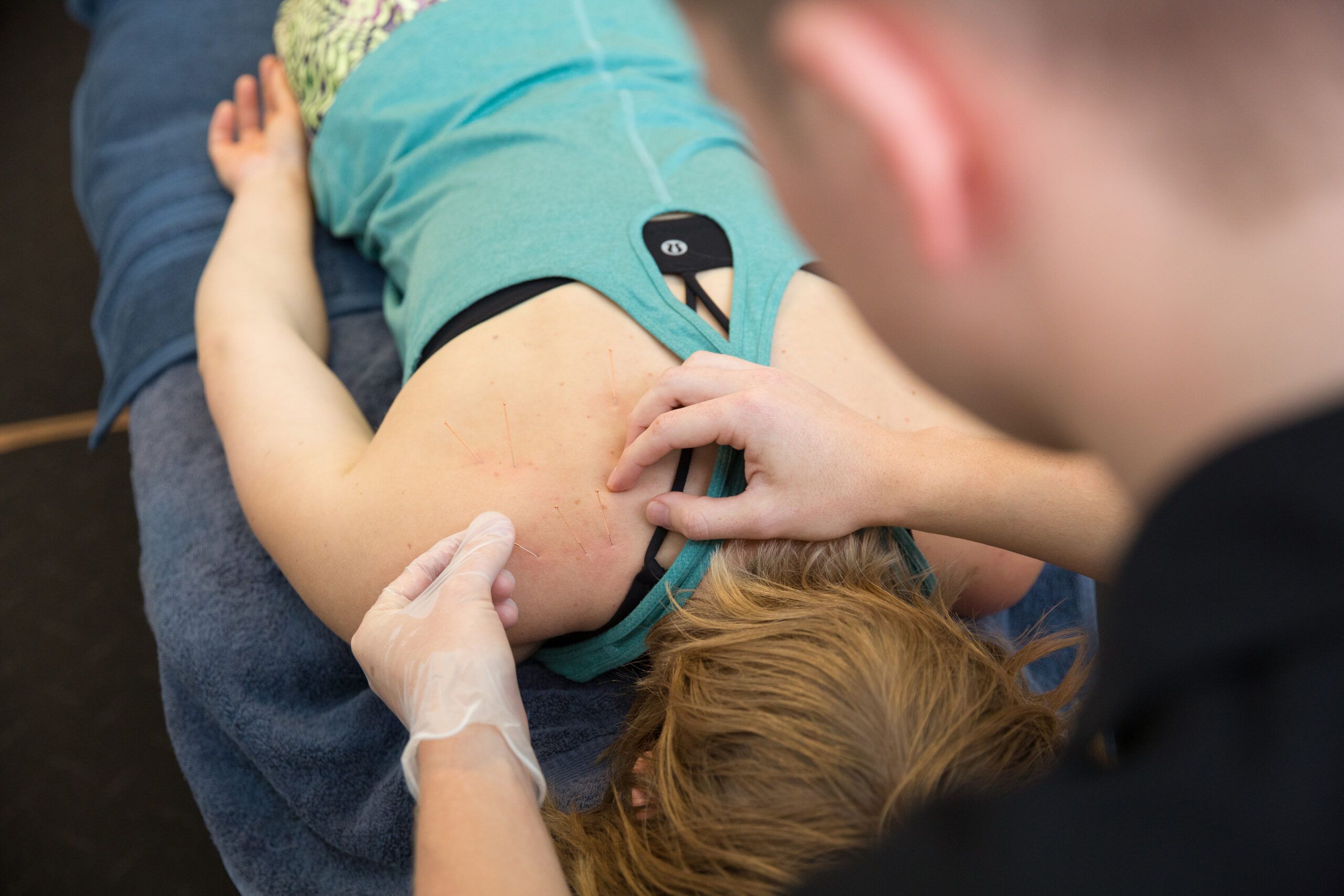
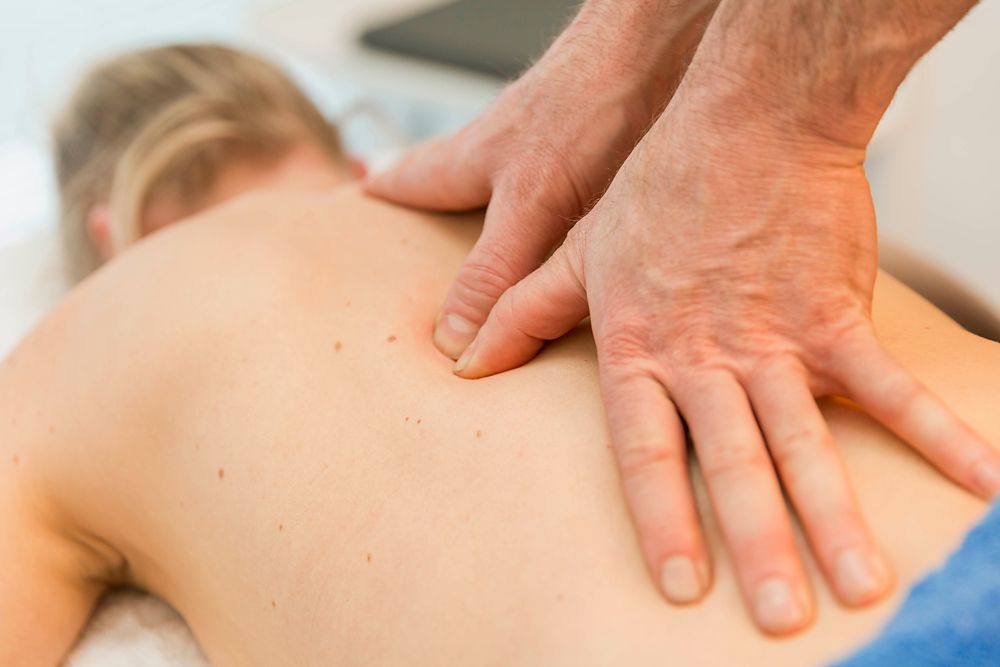
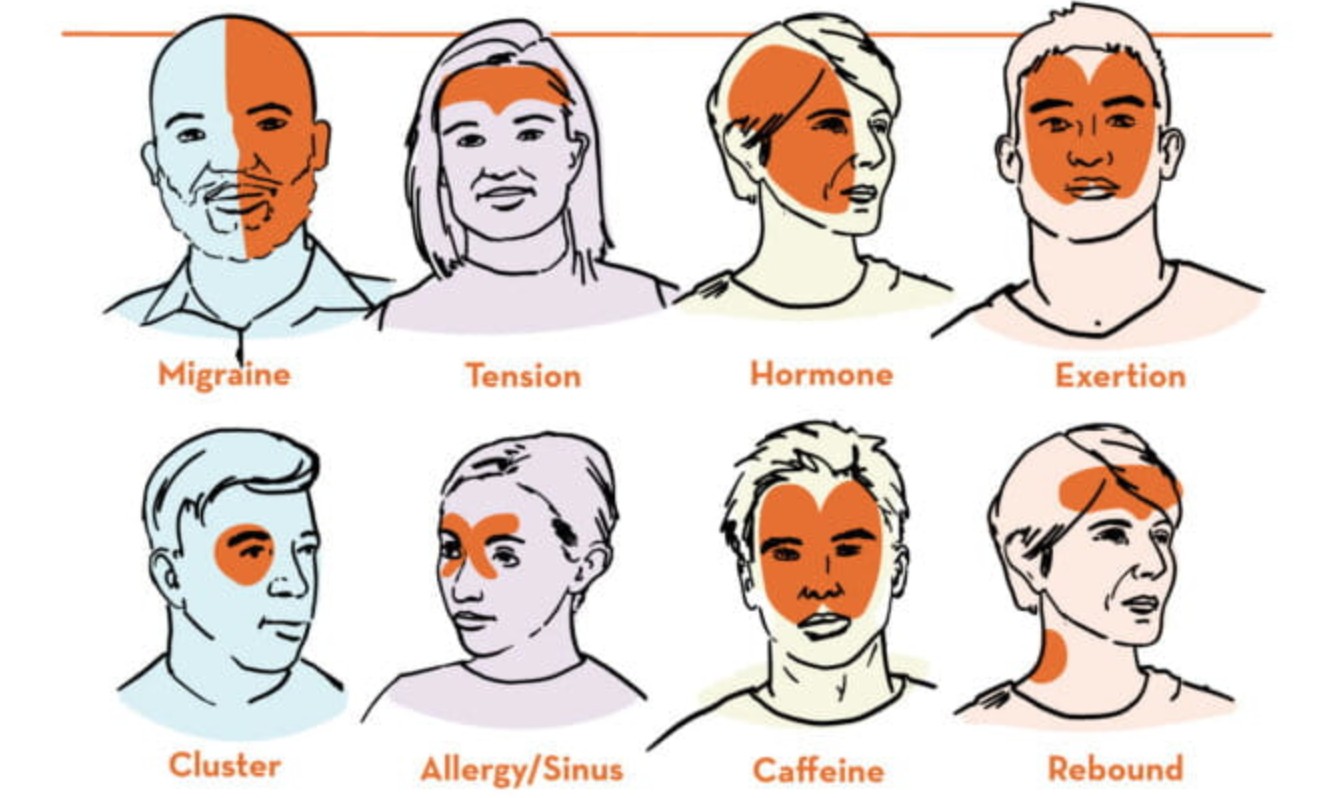
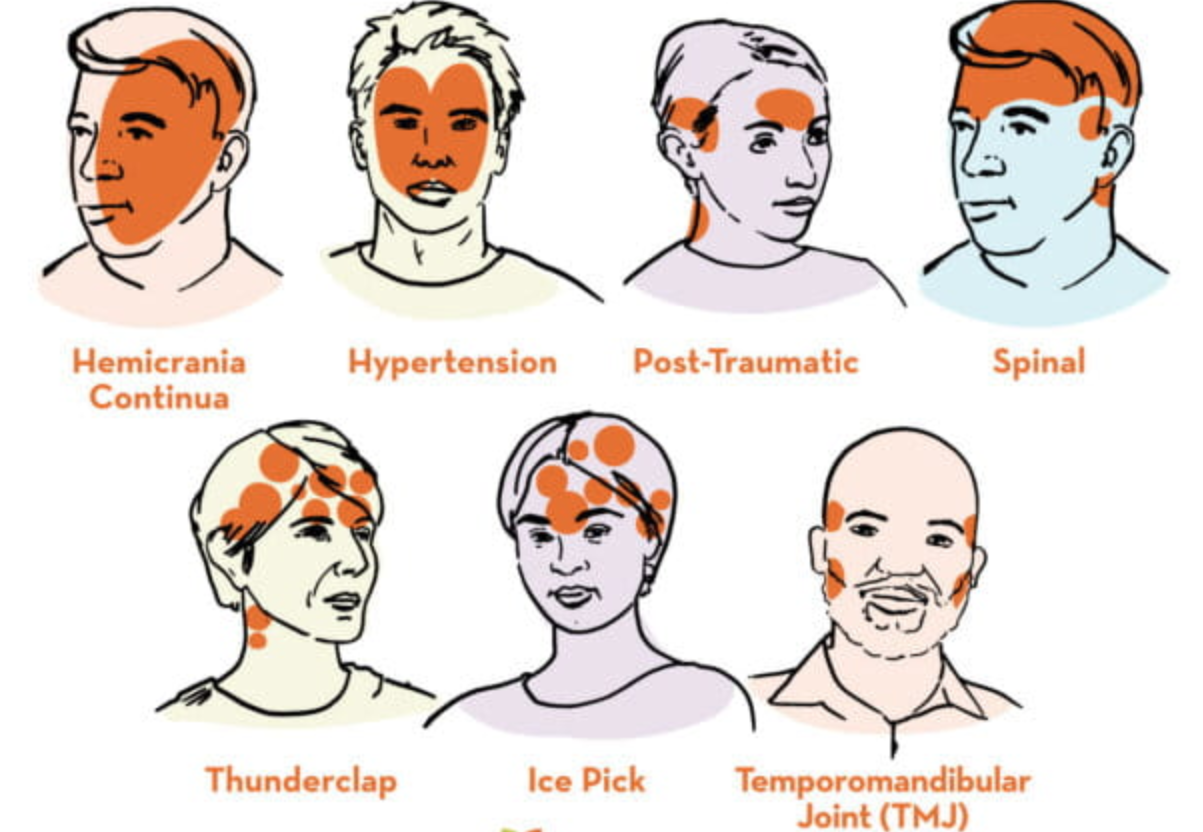
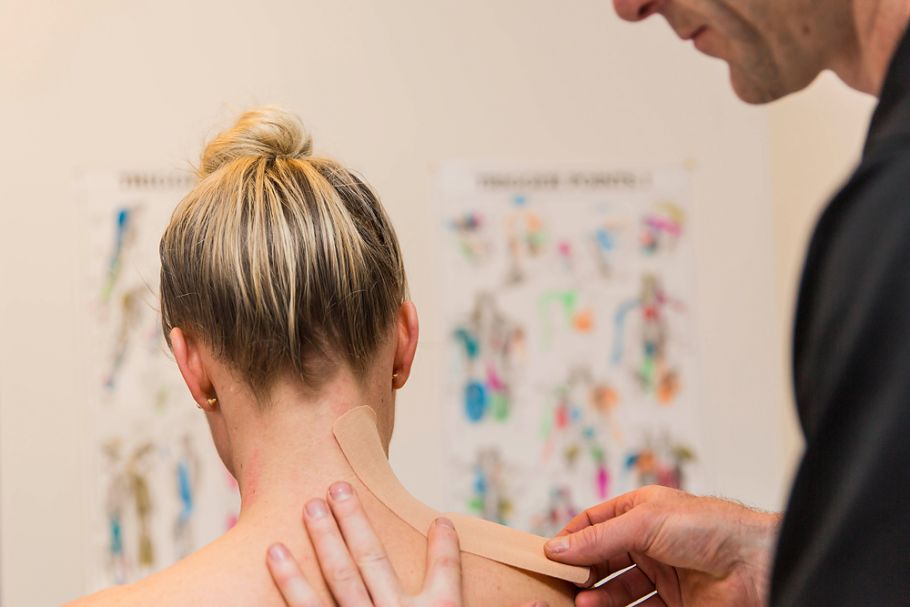
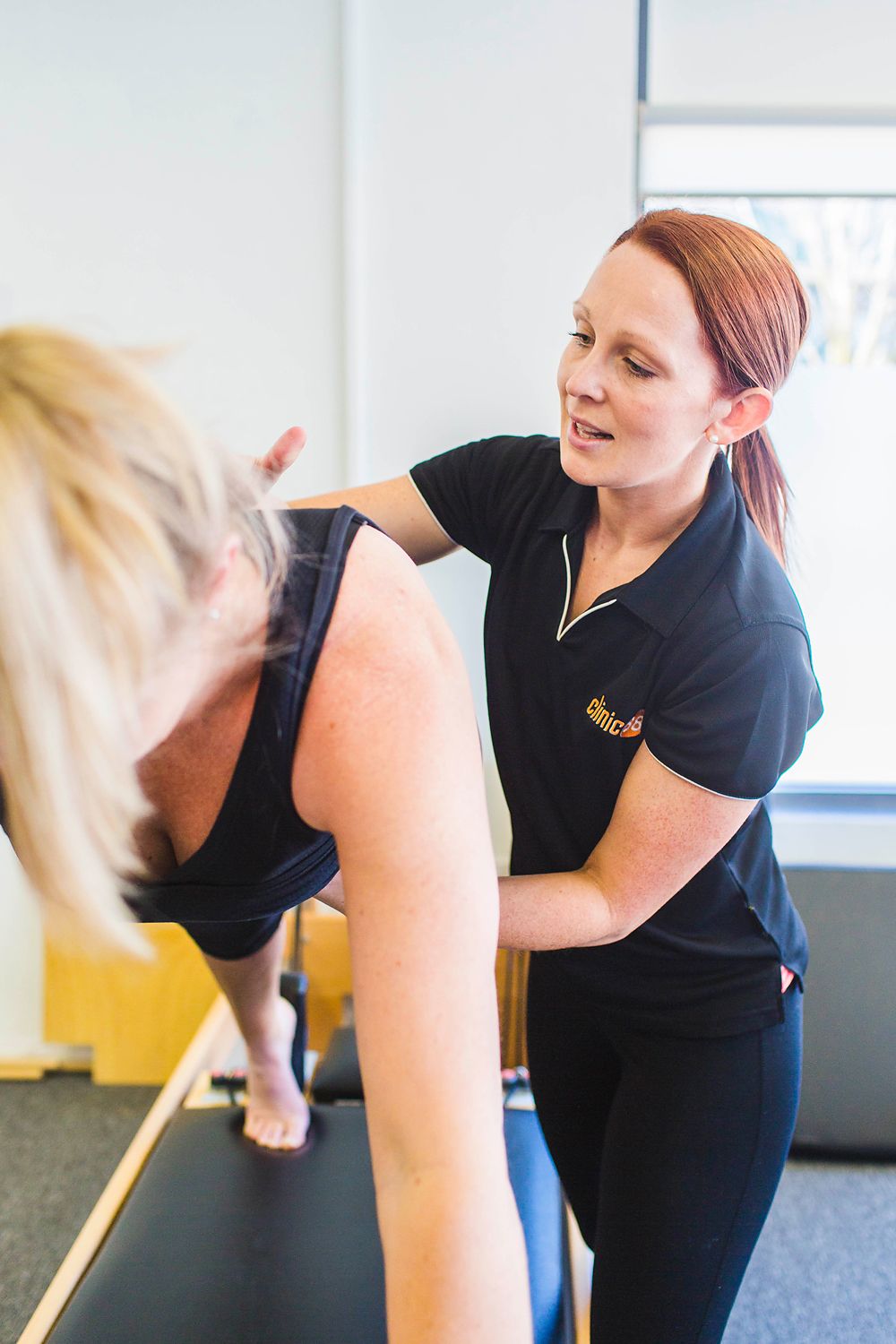
Causes of each type of Headache
Tension Headaches
- Stress or anxiety.
- Poor posture.
- Jaw clenching or teeth grinding.
- Eye strain.
Migraine Headaches
- Hormonal changes, especially in women.
- Certain foods or beverages, such as caffeine or alcohol.
- Sleep disturbances.
- Environmental triggers like bright lights or strong smells.
Cluster Headaches
- Alcohol consumption during a cluster period.
- Tobacco use.
- Altitude changes.
- Abnormalities in the hypothalamus.
Sinus Headaches
- Sinus infections or inflammation.
Exertional Headaches
- Strenuous exercise or physical activities.
- Increased blood flow to the brain during exertion.
Cervicogenic Headaches
- Neck injuries
- Herniated cervical discs
- Facet Joint irritation or degeneration
- Trigger points in neck muscles
TMJ Headaches
- Jaw misalignment or temporomandibular joint dysfunction.
- Chronic teeth grinding or clenching.
- Inflammation in the TMJ area.
- Stress-related tension in the facial or jaw muscles.
Postural Headaches
- Poor posture leading to muscle strain and tension.
- Prolonged sitting or standing in awkward positions.
- Weakness in core or back muscles supporting the spine.
Stress Headaches
- High levels of emotional or mental stress.
- Tight muscles in the scalp, neck, or shoulders.
- Prolonged periods of concentration or anxiety.
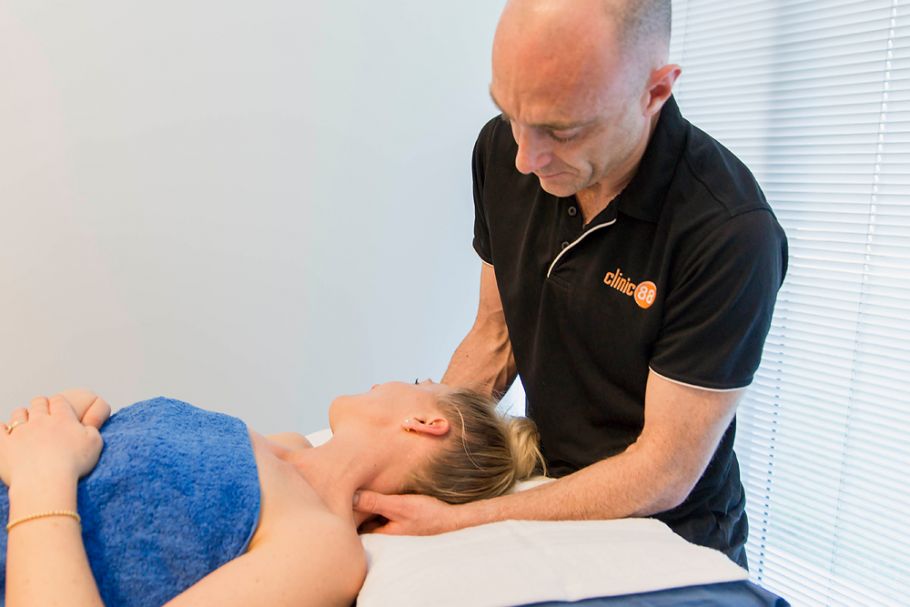
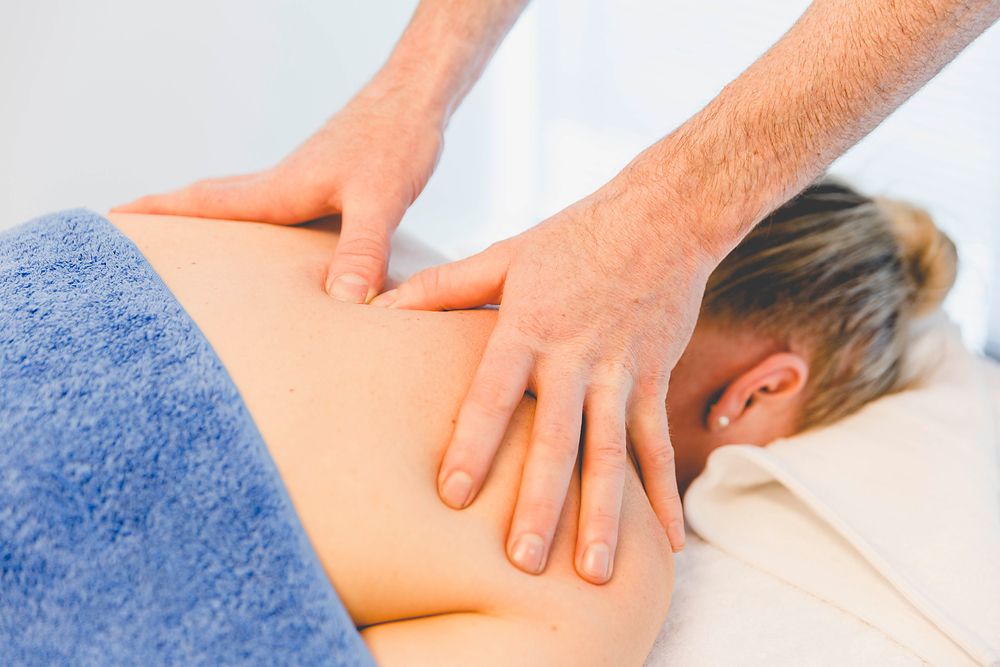

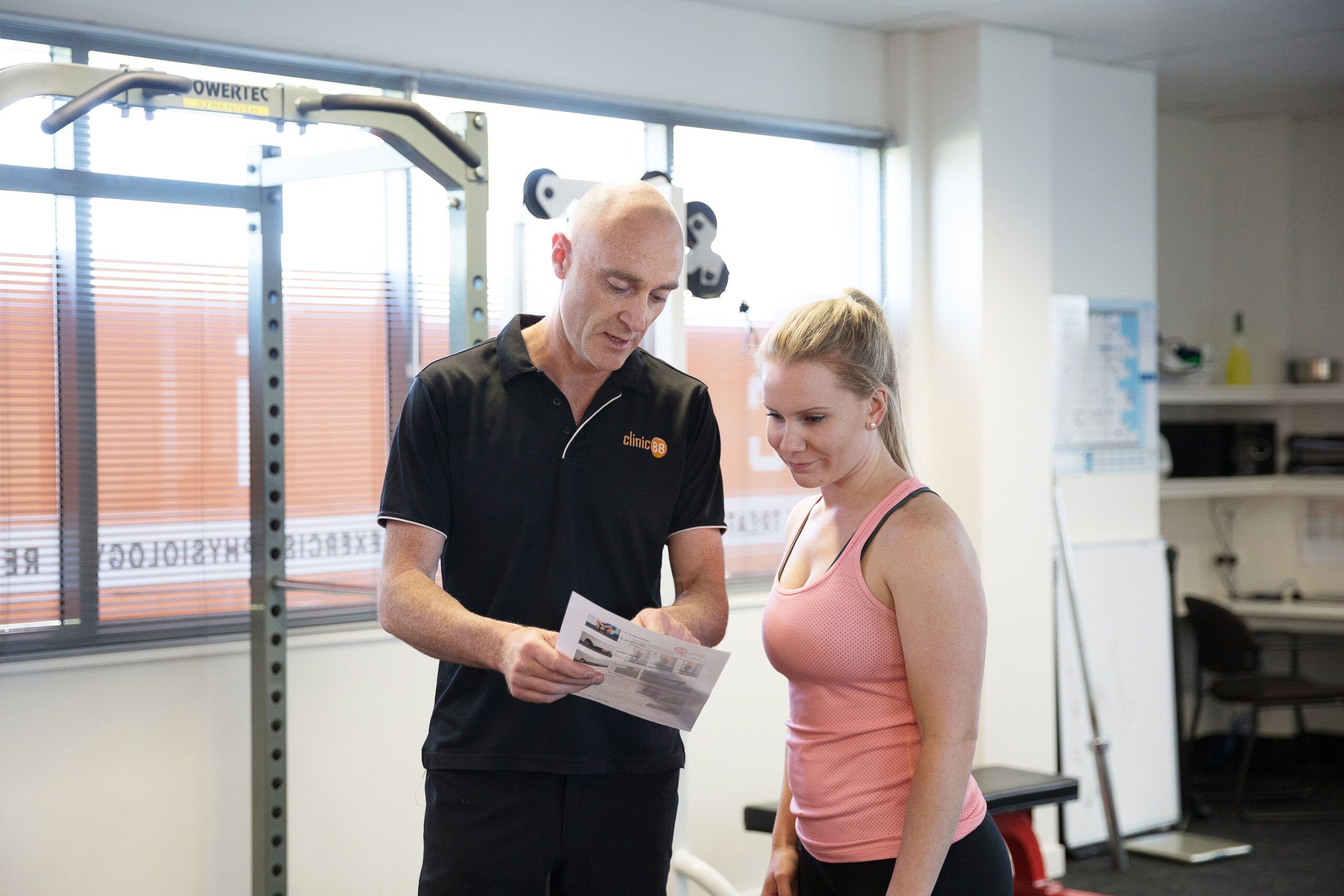
Treatment options for each type of Headache
Manual therapy involves hands-on techniques to alleviate headaches by addressing muscular and structural imbalances. Manual Therapy ranges from general massage techniques to joint mobilistion, Dry Needling, Stretching, Taping, Trigger point therapy, Myofascial Therapy, strengthening and postural training
Note that we work alongside your GP, Specialists, Dieticians and Psychologists to ensure you have the best team looking after you
Tension Headaches
- Massage therapy to reduce muscle tension in the neck and shoulders.
- Trigger point therapy targeting areas of concentrated tension.
- Stretching exercises to improve posture.
- Dry needling to reduce muscle tightness and improve blood flow.
- Postural considerations to correct imbalances caused by poor alignment.
Migraine Headaches
- Gentle massage to reduce stress and promote relaxation.
- Lymphatic drainage to improve toxin elimination and reduce inflammation.
Cluster Headaches
- Facial massage to alleviate tension around the eye and forehead.
- Dry needling for targeted pain relief.
Sinus Headaches
- Massage therapy to stimulate sinus drainage.
- Techniques to alleviate facial pressure.
- Lymphatic drainage therapy to aid fluid movement and sinus relief.
Exertional Headaches
- Stretching and mobilization exercises to avoid strain during physical activities.
- Strength exercises to build endurance and reduce overexertion risk.
Cervicogenic Headaches
- Manual Therapy to improve neck and back alignment.
- Soft tissue manipulation to reduce neck stiffness.
- Cervical mobilisation techniques to enhance neck mobility.
- Postural correction exercises to prevent recurrence.
- Strength exercises to build support in the cervical area.
TMJ Headaches
- Massage targeting the jaw muscles to relieve tension.
- Manual TMJ mobilization to improve joint alignment and movement.
- Dry needling for facial or jaw muscle pain relief.
- Postural exercises to reduce strain on the jaw and neck area.
- Strengthening exercises for the jaw and surrounding muscles.
Postural Headaches
- Massage therapy to address muscle tightness in the neck and shoulders.
- Cervical mobilisation for improved posture and spinal alignment.
- Postural exercises to correct poor habits and build musculoskeletal support.
- Strengthening exercises targeting the back and core muscles.
Stress Headaches
- Relaxation techniques such as gentle massage.
- Stress management practices like mindfulness and breathing exercises.
- Postural considerations to alleviate tension caused by poor alignment.
- Massage therapy to reduce muscle strain in the neck and shoulders.
Frequently Asked Questions
What is the difference between primary and secondary headaches?
- Primary headaches are not caused by another condition, while secondary headaches are a symptom of an underlying issue, such as sinus infections or neck injuries.
Can headaches be prevented?
- Yes, measures like stress management, staying hydrated, maintaining good posture, and avoiding known triggers can help prevent headaches.
Is manual therapy safe for headaches?
- Manual therapy is generally safe when performed by a qualified practitioner. We pried ourselves at Clinic 88 as being manual therapy experts
When should I see a doctor for my headaches?
- Seek medical attention if your headaches are severe, frequent, accompanied by other symptoms like vision changes or weakness, or if your manual therapy or over-the-counter treatments are ineffective.
How does dry needling work for headaches?
- Dry needling involves the insertion of thin needles into muscle trigger points to relieve pain, reduce tension, and improve circulation, making it effective for certain headache types.
Can posture contribute to headaches?
- Yes, poor posture can cause muscle strain and misalignment, leading to tension, postural, cervicogenic, TMJ, or even exertional headaches.
Are strength exercises helpful for headache prevention?
- Strength exercises can help by improving muscle support and reducing strain, especially for cervicogenic, TMJ, postural, and exertional headaches.
Can TMJ disorders cause more than just headaches?
- Yes, TMJ disorders can lead to jaw pain, difficulty chewing, ear discomfort, and even clicking or popping sounds in the jaw.
What should I do if my TMJ headache worsens?
- If TMJ headaches persist or worsen while being treated, we will consult your dentist and GP to ensure all avenues are being considered such as dental splints and medication
Can high stress levels lead to headaches?
- Yes! Stress can trigger tension and stress headaches, and managing stress through relaxation techniques or therapy can help reduce their frequency.
How can posture-related headaches be treated?
- Manual therapy, postural correction exercises, and strengthening routines targeting the muscles that are necessary for supporting adequate posture and reducing the vulnerability to headachese
Clinic 88 and Treating Headaches in Canberra
Headaches in Canberra – there are lots of reasons! Just thinking about all the roundabouts gives us headaches. My kids give me headaches. My football team gives me headaches. Those chilly Canberra mornings give me headaches!
There are lots of types of headaches and getting to know which type you are suffering from is very important as each treatment protocol is different.
We look forward to helping you at Clinic 88